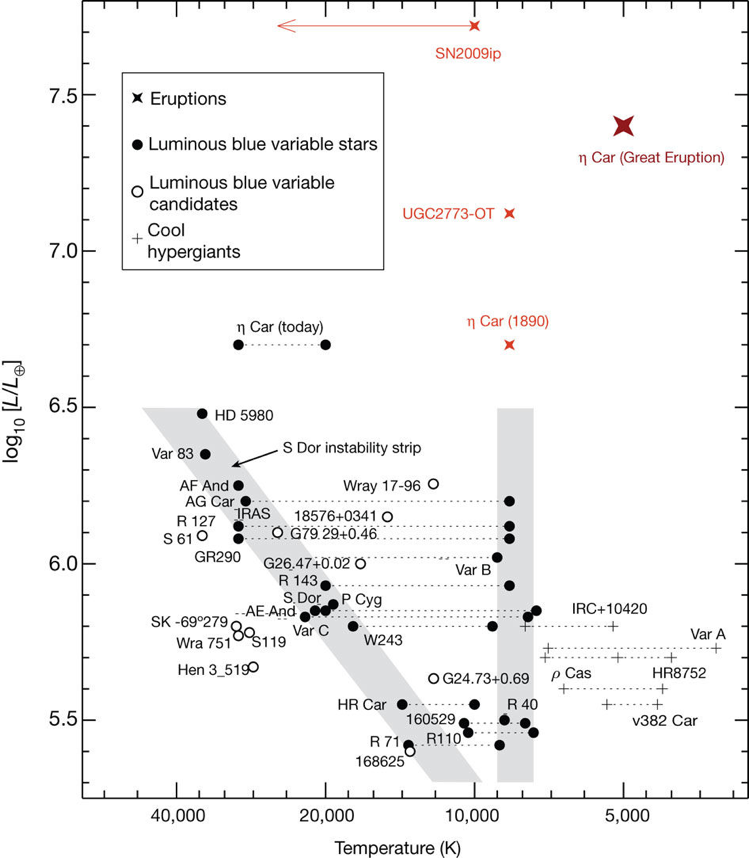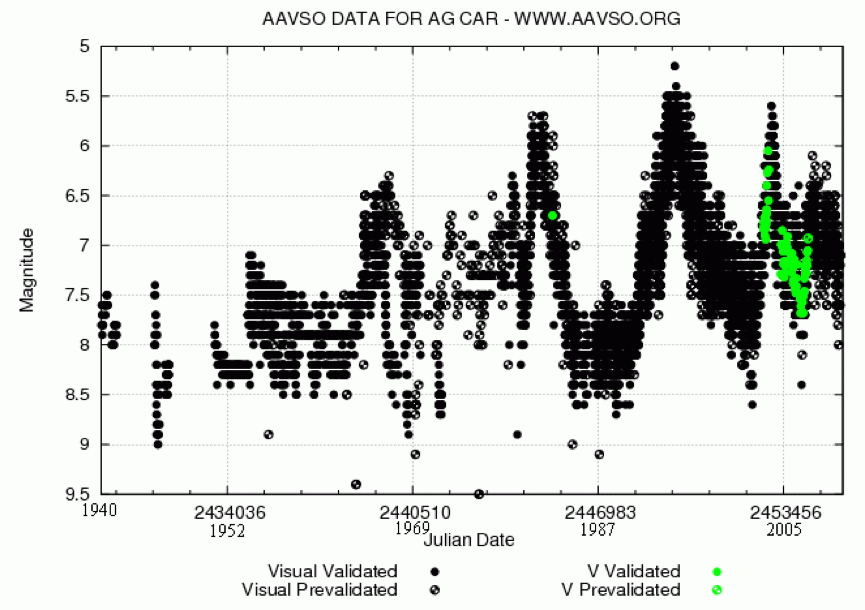Padova-Asiago Supernova Group
S Dor variability of luminous blue variables
We aim at monitoring galaxies hosting classical luminous blue variables (LBVs) within a few Mpc. We are interested in LBVs showing the most classical type of LBV photometric variability, the S Dor fluctuations. Famous examples in our Galaxy are AG Car and HR Car. In the nearby Universe, we can also mention: AE And and EF And in M31, Var C and Romano’s Star (GR 290) in M33, along with several well-studied LBVs in NGC 2403, LMC and SMC.
In contrast with LBV giant eruptions, during S Dor-like outbursts, stars experience brightness variability up to a couple of magnitudes, without a significant change in their bolometric luminosity (Humphreys & Davidson, 1994, PASP, 106, 1025; Humphreys et al. 2017, 844, 40). In this phase, LBVs moves to the right of the Hertzprung-Russell diagram, becoming redder and cooler, to then come back to the left side in quiescence (Fig. 1).

Fig. 1 Hertzprung-Russell Diagram showing the location of a few quiescent LBVs in the S Dor instability strip. LBVs, during S Dor-type outbursts, move to the right showing T ~ 9-8000 K. Giant LBV eruptions are located at the top of the diagram, with luminosities exceeding 107 that of the Sun. Credits: Picture from Rest et al. 2012, Nature, 482, 375.
Our main goal is creating a database of well-monitored light curves of nearby LBVs, with coverage spanning years to decades (see, e.g. the visual light curve of AG Car in Fig. 2). A major resource is the archive of photographic plates of Asiago, and former data from Prof. Leonida Rosino.

Fig. 2 Visual light curve of LBV AG Car, spanning about 70 years. Credits: AAVSO light curve generator.
Leading researchers: A. Reguitti, A. Pastorello, P. Ochner.
Collaborators: M. della Valle, A. Bianchini, G. Pignata, L. Tartaglia, N. Elias-Rosa, E. Mason, M. Fraser.
Notes: The study of the photometric properties of LBVs in the Local Universe is the subject of the PhD Thesis of A. Reguitti.